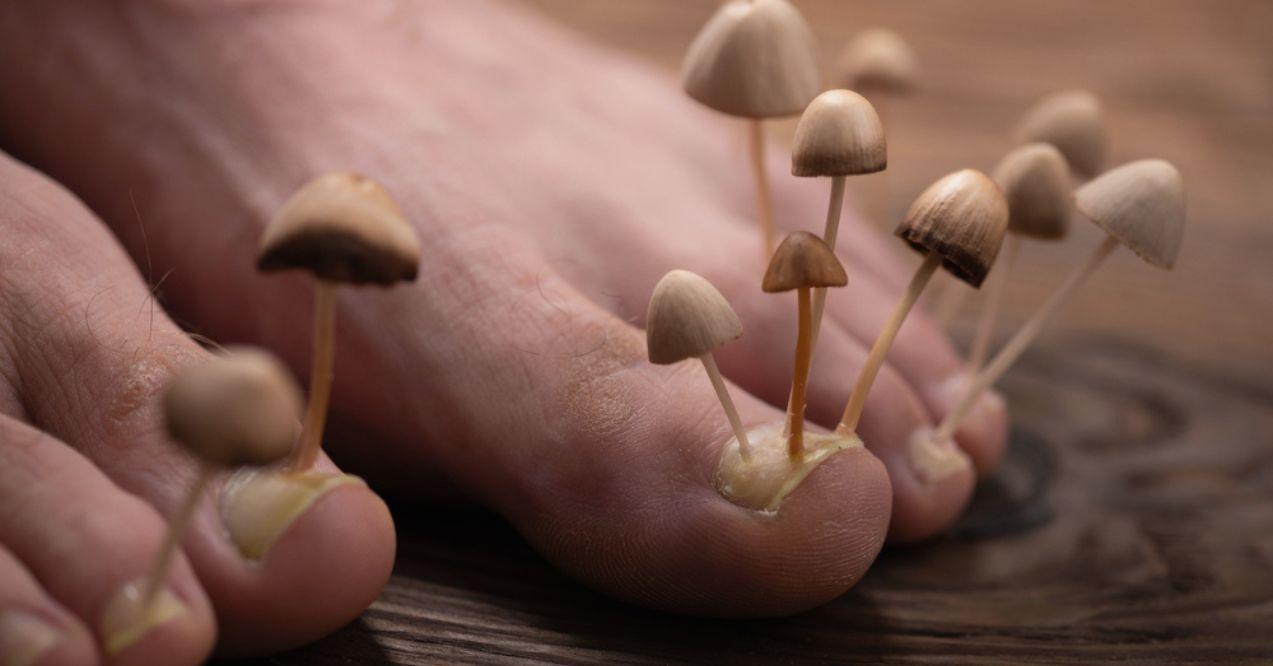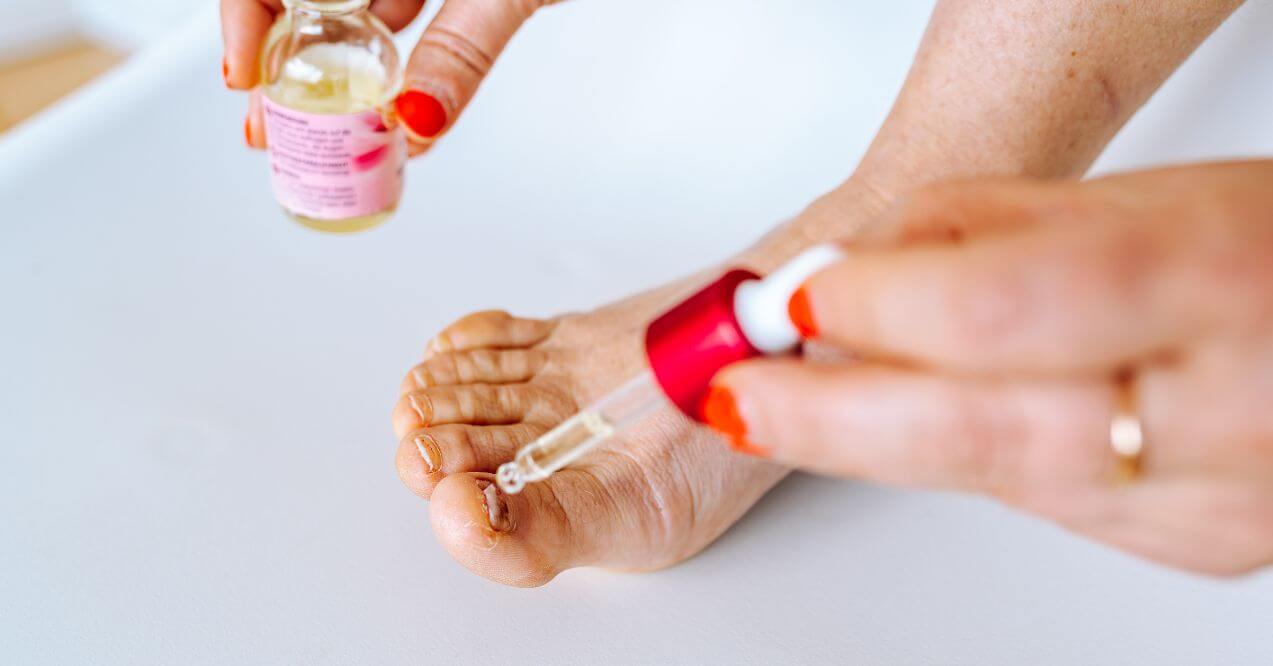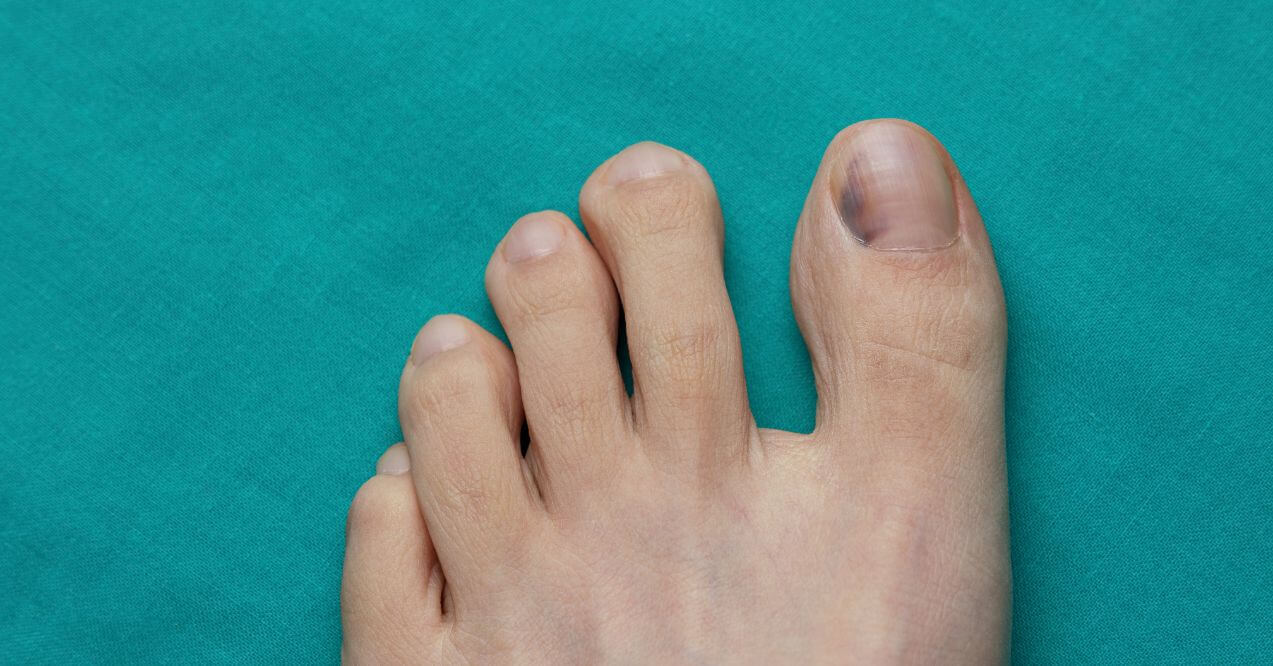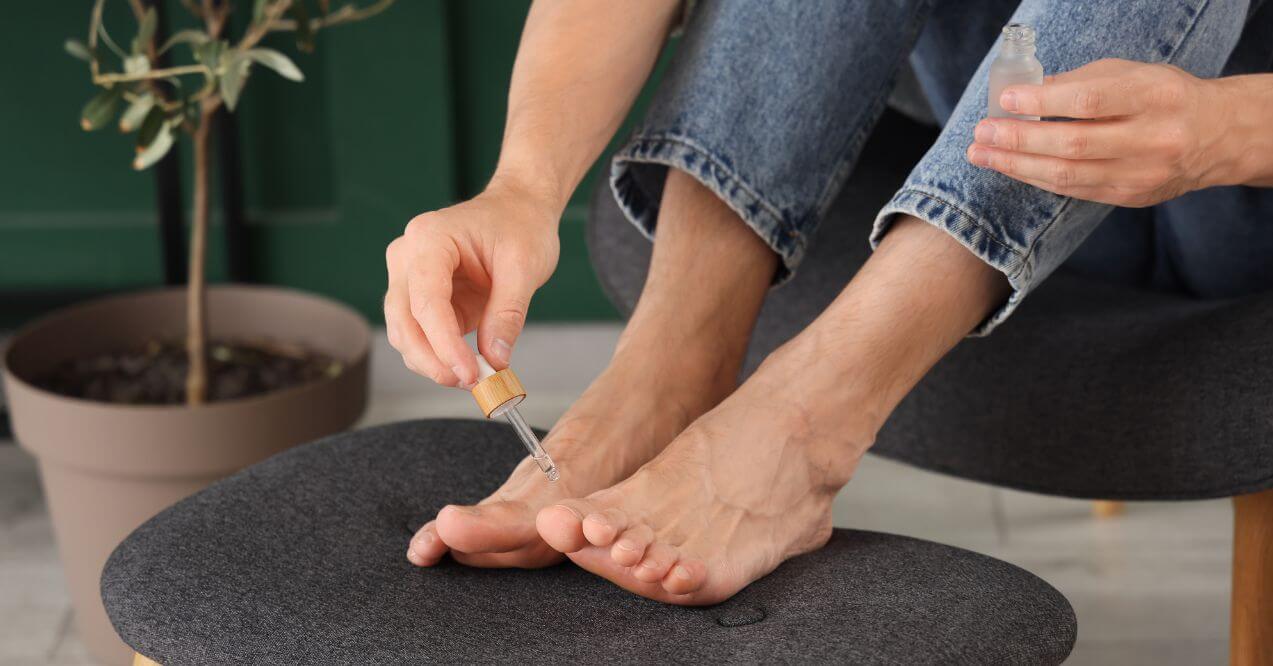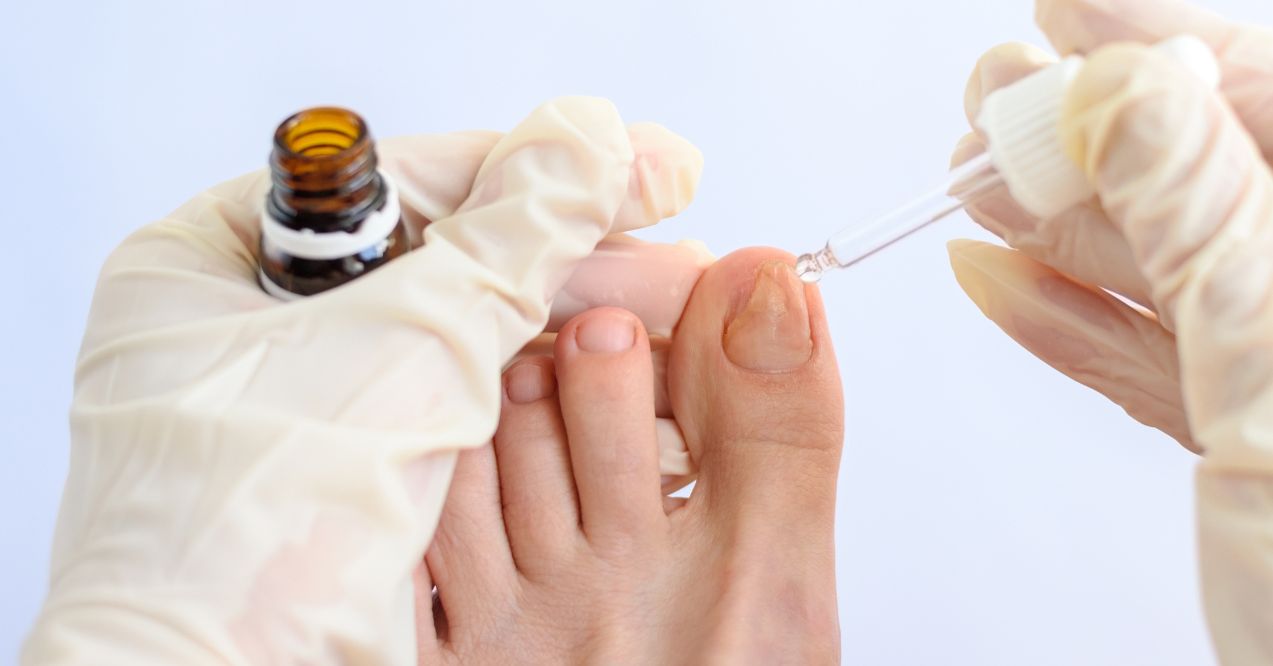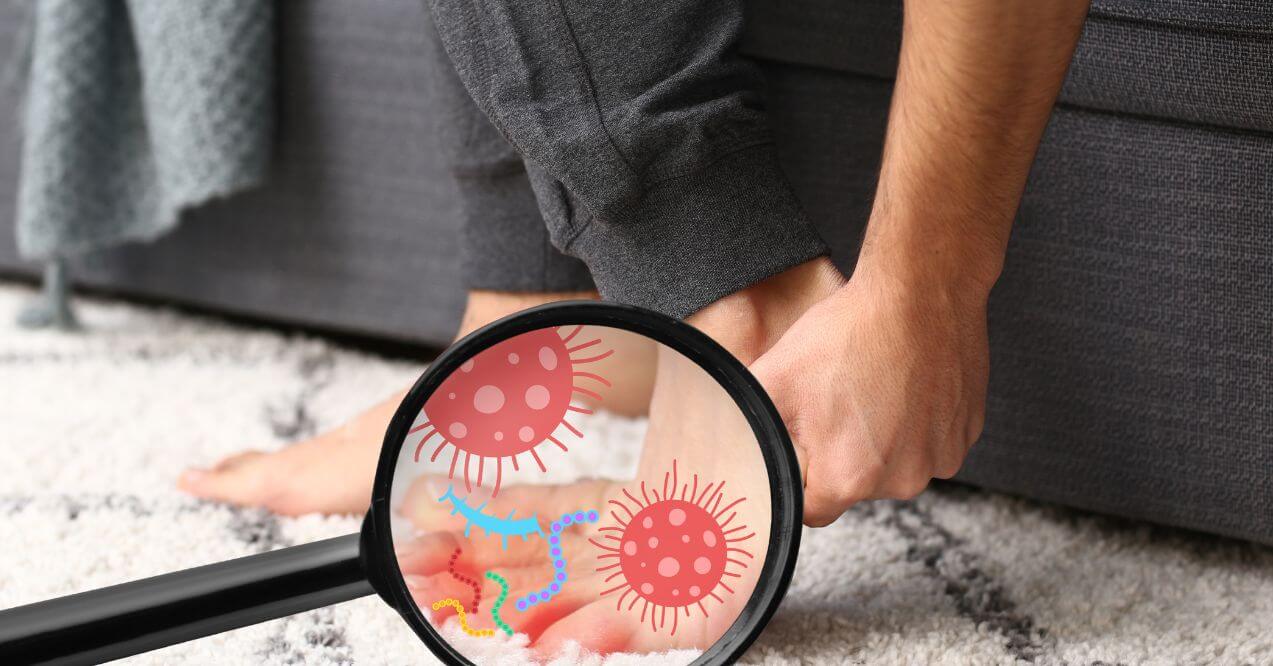Early Stages of Toenail Fungus: Symptoms, Causes and Treatments
Medically reviewed by our experts
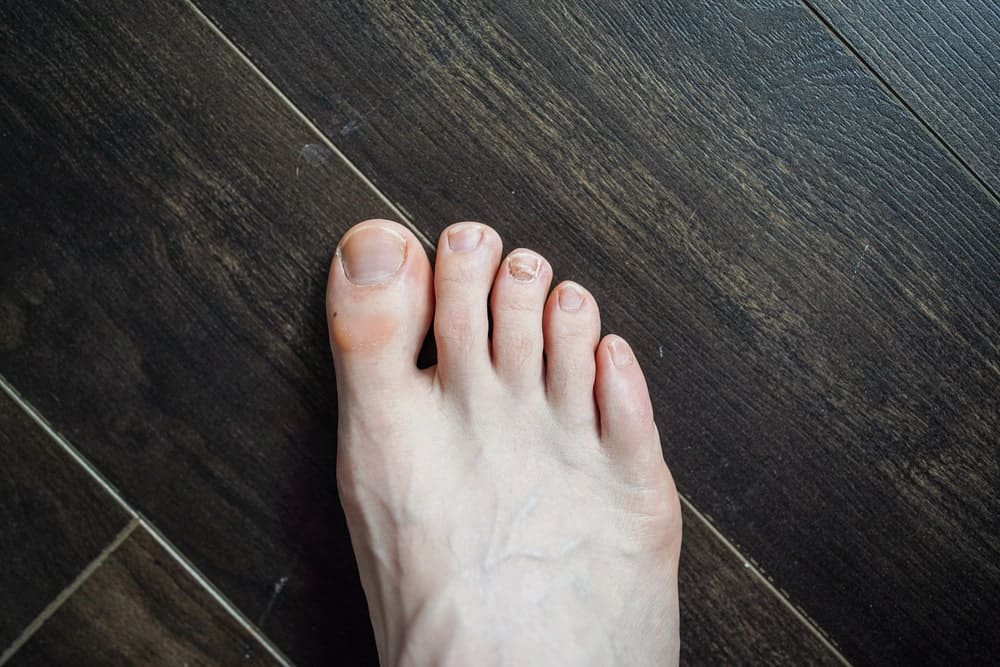

Early-stage toenail fungus is an infection in your toenails caused by a particular string of fungus called dermatophytes. The organism that causes toenail fungus is the same one that causes athlete’s foot, jock itch, and ringworm. Early-stage of nail fungus is often identified by brittle, yellowed nails that grow in thickly or unevenly.
Anyone can develop early-stage toenail fungus after coming into contact with the particular infecting agent; however, people with diabetes, psoriasis, peripheral artery disease, or a previous case of athlete’s foot are more susceptible.
What Is Toenail Fungus?
If you notice any of these symptoms in your nails, then this article is for you. You might have early-stage toenail fungus that needs immediate treatment to prevent a worsened condition.
- Toenails that are brittle or crumble when handled
- Toenails that grow in at an awkward angle
- Toenails that grow in misshapen
- Toenails that are discolored, often yellow or brown-tinged
- Toenails that hurt or are painful when touched
- Toenails that are lifted off the skin or that are about to fall off
- Toenails that are cracked, brittle, or fragile
- White or yellow patches on the top layer of the toenail, ranging from small dots to large streaks
Early Stages of Toenail Fungus: Causes
An ounce of prevention is worth a pound of treatment, as the saying goes. Therefore, we’re here to give you the main causes of toenail fungus so that you can avoid dealing with the issue in the first place.
Fungal infections creep into the body when there is a small crack or opening in the nail or the surrounding skin. If the opening comes in contact with the infecting fungus, then it will begin to develop in the body.
Furthermore, these infections can spread from one area to the other. If someone has athlete’s foot, for example, and then cuts their toenails down too low into the skin, the infection will spread and develop into early-stage nail fungus.
Preventing toenail fungus is easy. Add these tips and tricks into your routine so that you can protect yourself and go about your activities with peace of mind.
- Choose breathable shoes that fit well and that don’t scrunch your toes.
- Change shoes each day to allow your other pair to breathe and air out.
- Whenever possible, remove your shoes (e.g., under your desk, when you get home, etc.). This allows your feet to breathe.
- Keep your toenails clean and short (but not too short!).
- When using public showers and water areas, always use shower shoes or flip-flops. This includes water parks, pools, hot tubs, saunas, communal showers, and changing rooms.
- Only go to nail salons that can show you how they sanitize their equipment. Read reviews to ensure that no one else has gotten infections after getting pedicures at those salons. Additionally, you could bring your own instruments for them to use.
- Only use your own nail clippers, towels, socks, and shoes. If someone else has a fungus and has used these items, it will spread!
- Wash all towels and gym clothes/socks in hot water or use a laundry sanitizer that kills fungal spores.
Different Stages of Toenail Fungus
There are different stages of toenail fungus. The infection starts small but continues in severity as the infection develops. Without treatment, it becomes harder to handle, and the fungus spreads to the other toenails.
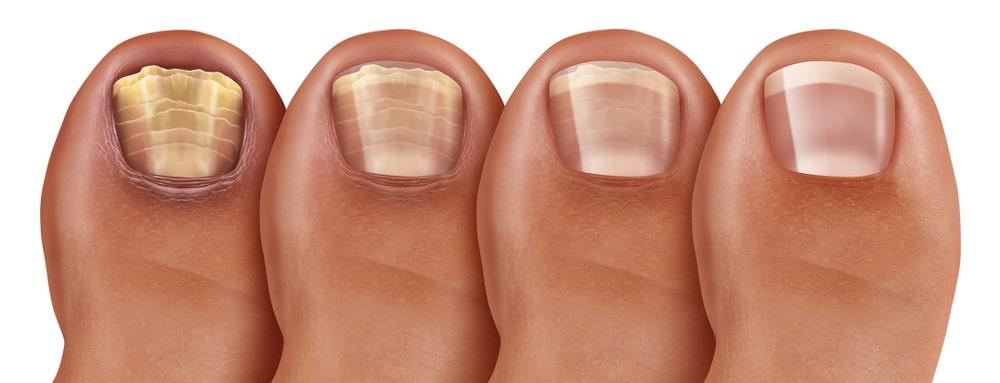
People often see the signs of early-stage toenail fungus and ignore them. Remember that once it appears, it usually won’t go away on its own! If you see signs of an infection that are getting worse, or your toenails are painful, the skin is red, or they begin collecting pus, it’s time to see a doctor. (Hint: Do it before it gets to this stage so that treatment is easier!)
Early Stages of Toenail Fungus: Symptoms
You might notice these symptoms that come along with the early-stages of toenail fungus. If you do, that’s a good sign because you can treat them earlier. Signs of the beginning stages of toenail fungus include:
- Brittle nails
- Cracked nails
- Discoloration around the nail edges, top, or sides
Usually, this happens first on the big toe, as this is the one most likely to have cracks or openings in the skin. The toenail fungus spreads quickly to the others, though, if left untreated. Other toenails can present first, though, too, so keep an eye on them all!
Later stages of toenail fungus bring even more severe symptoms. These include, but aren’t limited to:
- Toenail thickening
- Toenails falling off
- Pain when walking or wearing shoes
- Discomfort when the toenail is touched
If you want to prevent late-stage toenail fungus and its symptoms, you must diagnose and treat the issue early on. Your best bet is to have your primary care provider determine if the symptoms you’re experiencing qualify as early-stage or late-stage nail fungus. Then, they can give you an accurate treatment plan.
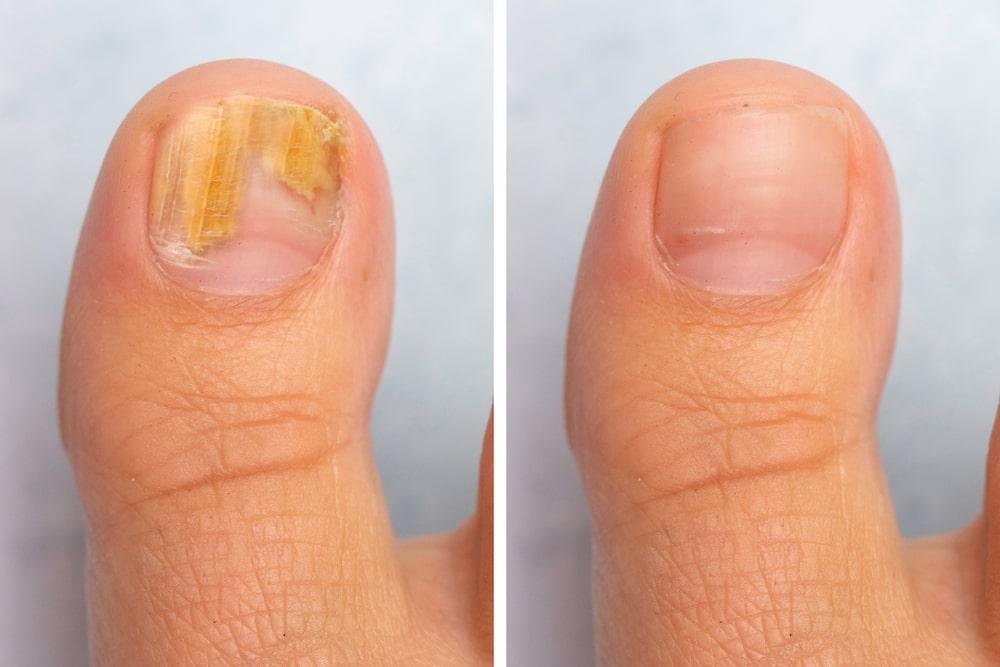
Earlys Stages of Toenail Fungus: Treatments
Treatment for early-stage toenail fungus and late-stage toenail fungus come in different forms. Remember to meet with your doctor to prepare a plan. You’ll want to have someone who can track your progress to ensure that your nails are returning to their normal, healthy state over time. Especially if you have an underlying health condition, such as diabetes, circulatory issues, or arterial disease, treating nail fungus under the care is essential.
Additionally, treating toenail fungus at home may not always be safe. Procedures such as using bleach for toenail fungus may increase the risk of fungal infestations, as it damages both the skin and nails. With such increased risks, the chances of fungus penetrating the damaged skin or cells become higher, potentially worsening existing conditions.
If your doctor is aptly concerned or isn’t sure about which type of treatment will work best for you, they might take a sample of your toenail to send off to a lab. This is similar to how many other infections are treated, such as strep or urinary tract infections.
Antibiotics work best when they are prescribed for the exact strain of bacteria that is causing the infection, so if you simply throw antibiotics down without having them match the infecting organism, they won’t do much good.
Depending on the severity of your case—if your nail fungus is in the early stages or if it’s late-stage nail fungus—your provider might also suggest other tests. One of those ways could be examining toenail scrapings under a microscope. This way, your doctor can determine exactly what strain of fungus caused the infection.
This probably won’t be fun since your nails are probably painful and uncomfortable when handled. However, it’s the only way to accurately treat nail fungus, so it is an important part of the process.
Many types of skin and nail conditions present very similarly, such as psoriasis. You wouldn’t want a prescription for psoriasis that would allow your toenail fungus to continue running rampant!
Toenail fungus’s beginning stages, although seemingly not serious, are something that requires treatment over a long period. This can be done in several non-invasive ways, however.
- Antifungal Tablets – If you don’t mind taking pills, this could be a great option for you. These both treat all types of fungal infections, making them easily accessible and prescribed often. They do need to be taken for a few months, though, to ensure that all the infecting fungus has left the body.
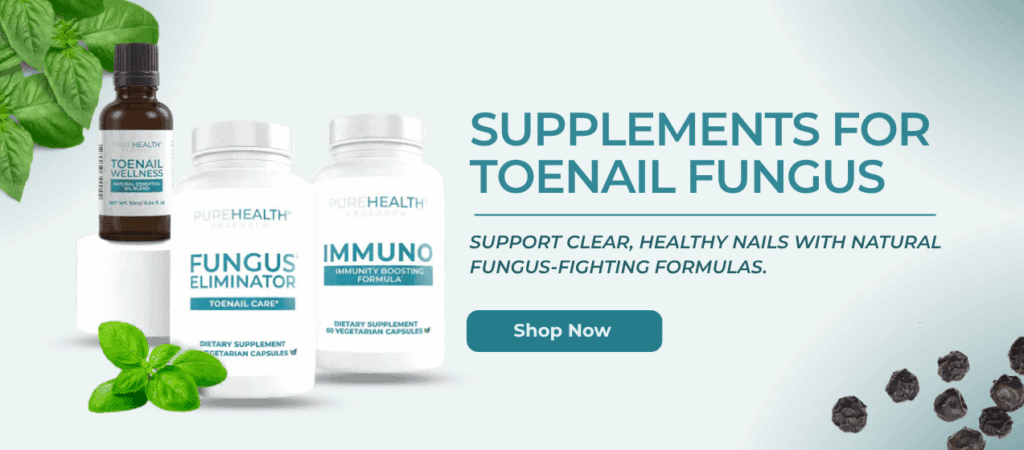
Dr. Holly Lucille suggests supplements for toenail fungus to help support the body’s natural defenses and promote healthier nails from within.
- Topical Creams or Solutions – You may have heard of creams or nail-polish-like solutions containing ciclopirox. These treatments are rubbed over the affected area and work to treat the infection from the outside in.
- Toenail Removal – Though arguably not the most desired treatment, sometimes toenail removal might be necessary. Once your body heals from the infection, the toenail often grows back.
Talk to your doctor about what treatment is best for you. This will depend on how long the infection has been present in your body, the type of fungus that caused it, your lifestyle, and any other health conditions you may have.
Don’t be afraid to get a second opinion, either! They can often help you weigh your options to make the best decision. If you want to learn more, you can read our article on how to get rid of toenail fungus.
Final Thoughts
Toenail fungus is a common occurrence, especially among people who frequent nail salons, the gym, or communal pool or shower areas. It’s nothing to be embarrassed about! The sooner you treat the fungus, the easier it will be, and the sooner you can get back to flaunting your beautiful feet and toenails.
If you have toenails that are becoming brittle, yellowed, misshapen, or painful, reach out to a doctor right away. They will be able to tell you what types of treatment are available and help you make a plan to treat the toenail fungus and prevent it from coming back in the future.
Stay safe and protect yourself by wearing comfortable, breathable shoes. Let your feet rest in between long shoe-wearing periods, and always use your own clothes, towels, and hygiene supplies. Your feet carry you everywhere you go, so you want to take good care of them and prevent early-stage nail fungus.
Toenail fungus is caused by dermatophytes, the same fungi responsible for athlete’s foot, jock itch, and ringworm. The infection typically enters through small cracks or openings in the nail or surrounding skin. People most at risk include those with diabetes, psoriasis, peripheral artery disease, a history of athlete’s foot, or those who frequently use communal showers, pools, or nail salons.
Yes, toenail fungus can spread to other parts of the body if left untreated. For example, if someone has athlete’s foot and cuts their toenails too short, the infection can spread to the nails. Additionally, the fungus can move from one toenail to another, worsening the overall condition.
A healthcare provider may diagnose toenail fungus through a physical examination of the nails. They might also take a sample of the toenail to send to a lab for testing. This helps identify the specific type of fungus causing the infection, ensuring that the prescribed treatment is effective. In some cases, toenail scrapings may be examined under a microscope to determine the exact strain of fungus.
Popular Articles
Advertisement. This site offers health, wellness, fitness and nutritional information and is designed for educational purposes only. You should not rely on this information as a substitute for, nor does it replace, professional medical advice, diagnosis, or treatment. If you have any concerns or questions about your health, you should always consult with a physician or other health-care professional. Do not disregard, avoid or delay obtaining medical or health related advice from your health-care professional because of something you may have read on this site. The use of any information provided on this site is solely at your own risk.




